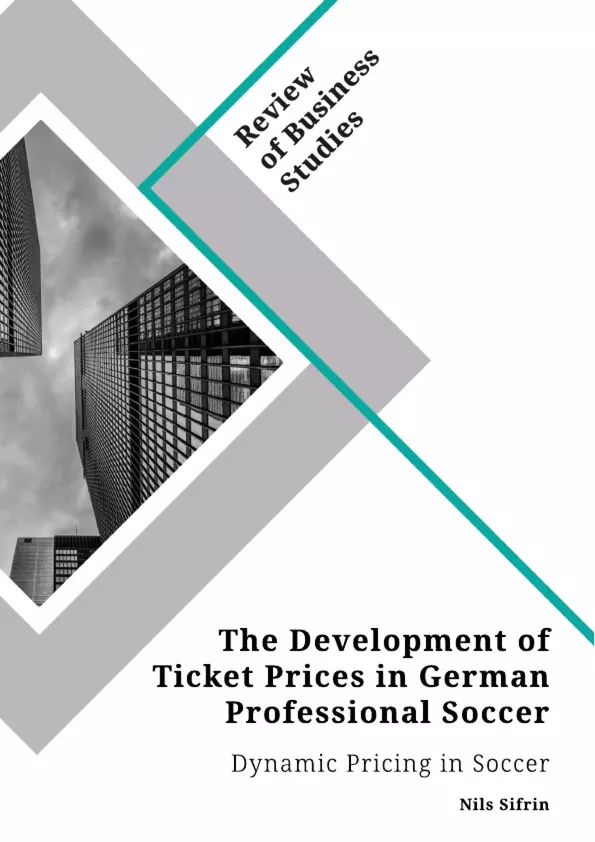This Thesis will examine the development of ticket prices in German professional soccer. The data gathered from the first and second divisions will be compared to current prices in other European leagues as well as other sports to determine if clubs should charge more money for tickets.
Furthermore, this thesis will discuss the viability of dynamic pricing strategies in German professional soccer. Therefore, dynamic pricing in the hotel and tourism sector will be adapted to the current situation at German professional soccer. Advantages and disadvantages of dynamic pricing will be analyzed to optimize pricing strategies for German soccer clubs. These recommendations will be separately projected on the First and the Second Bundesliga.
Inhaltsverzeichnis (Table of Contents)
- Introduction and Motivation
- Ticket Prices in the Professional Team Sport Industry
- Ticket Prices in German Soccer
- Ticket Prices in other European Soccer Leagues
- Ticket Prices in the US Major Leagues
- Ticket Sales in German Professional Soccer
- Pricing Strategies in German First and Second Bundesliga
- Dynamic Pricing as the Future of Ticket Pricing in Sports
- Dynamic Pricing in German Soccer
- Discussion
- Further Research and Recommendations for Practitioners
Zielsetzung und Themenschwerpunkte (Objectives and Key Themes)
This Bachelor Thesis examines the viability of using Dynamic Pricing for contemporary German professional soccer teams. It aims to analyze how on-field performance affects off-field performance, specifically regarding ticket sales and capacity utilization. The thesis will explore the application of Dynamic Pricing in the German and US sports contexts, addressing potential risks and proposing strategies for successful implementation. The thesis ultimately seeks to demonstrate that Dynamic Pricing can maximize revenue and capacity utilization while prioritizing fan satisfaction.
- Dynamic Pricing in Professional Soccer
- The Relationship Between On-Field and Off-Field Performance
- Maximizing Revenue and Capacity Utilization
- Fan Engagement and Satisfaction
- Dynamic Pricing Strategies in German and US Sports
Zusammenfassung der Kapitel (Chapter Summaries)
- Introduction and Motivation: This chapter provides an overview of the thesis topic, highlighting the importance of ticket sales and capacity utilization in professional soccer. It also introduces the concept of Dynamic Pricing and its potential benefits for German soccer clubs.
- Ticket Prices in the Professional Team Sport Industry: This chapter examines ticket pricing strategies in various professional soccer leagues worldwide, including German, European, and US leagues. It provides a comparative analysis of pricing trends and factors influencing ticket pricing decisions.
- Ticket Sales in German Professional Soccer: This chapter focuses on ticket sales practices in the German First and Second Bundesliga. It discusses various pricing strategies, including Dynamic Pricing, and analyzes the impact of these strategies on revenue generation and fan engagement.
Schlüsselwörter (Keywords)
The key topics explored in this thesis include Dynamic Pricing, ticket pricing strategies, professional soccer, revenue maximization, capacity utilization, fan engagement, German Bundesliga, and US Major Leagues. It examines the relationship between on-field performance and off-field performance, particularly in terms of ticket sales and fan satisfaction.
- Quote paper
- Nils Sifrin (Author), 2017, The Development of Ticket Prices in German Professional Soccer. Dynamic Pricing in Soccer, Munich, GRIN Verlag, https://www.grin.com/document/947378



